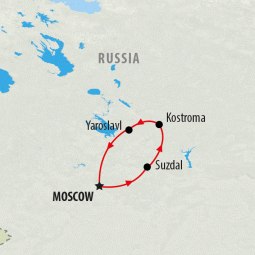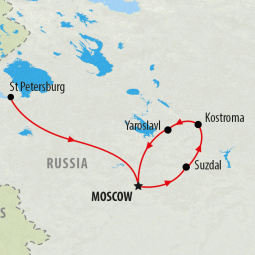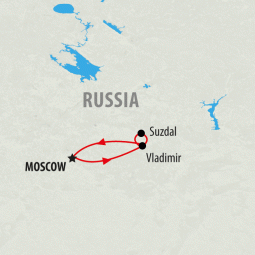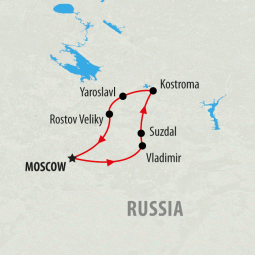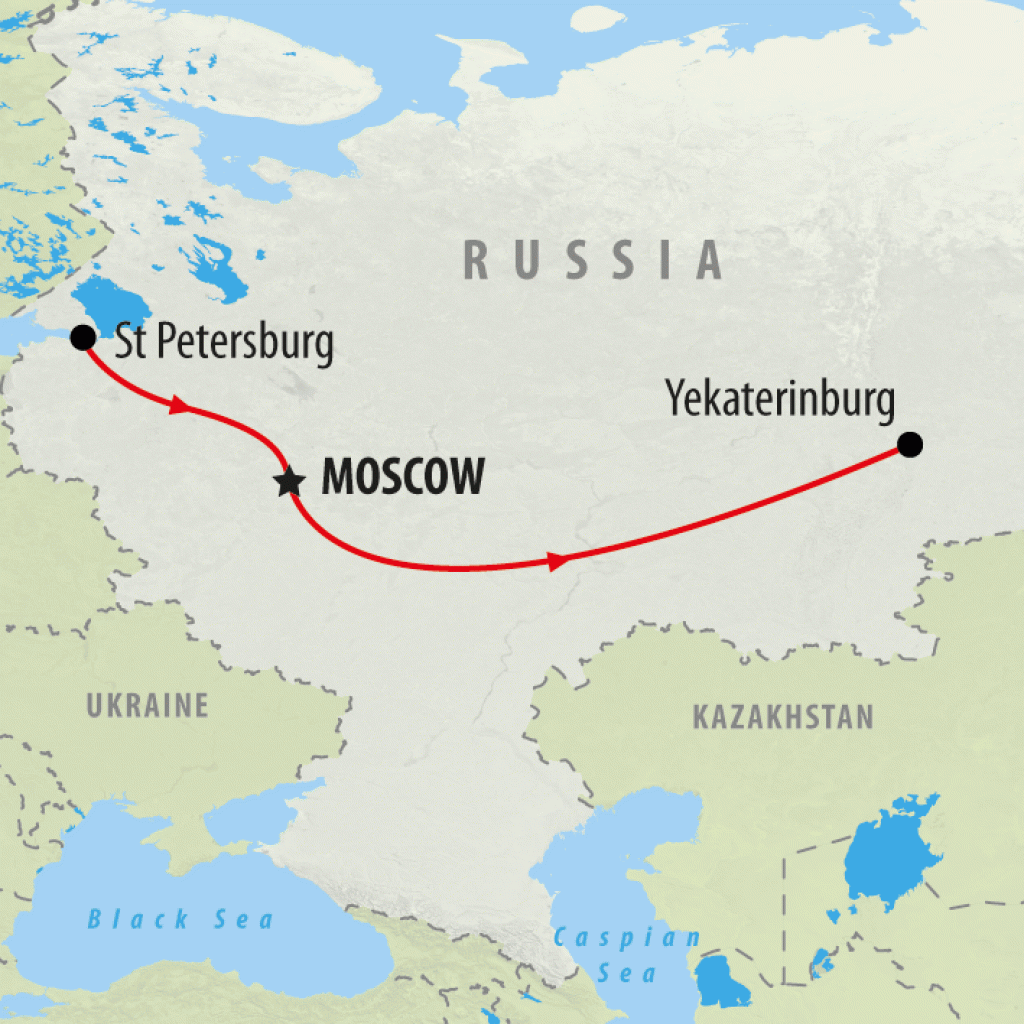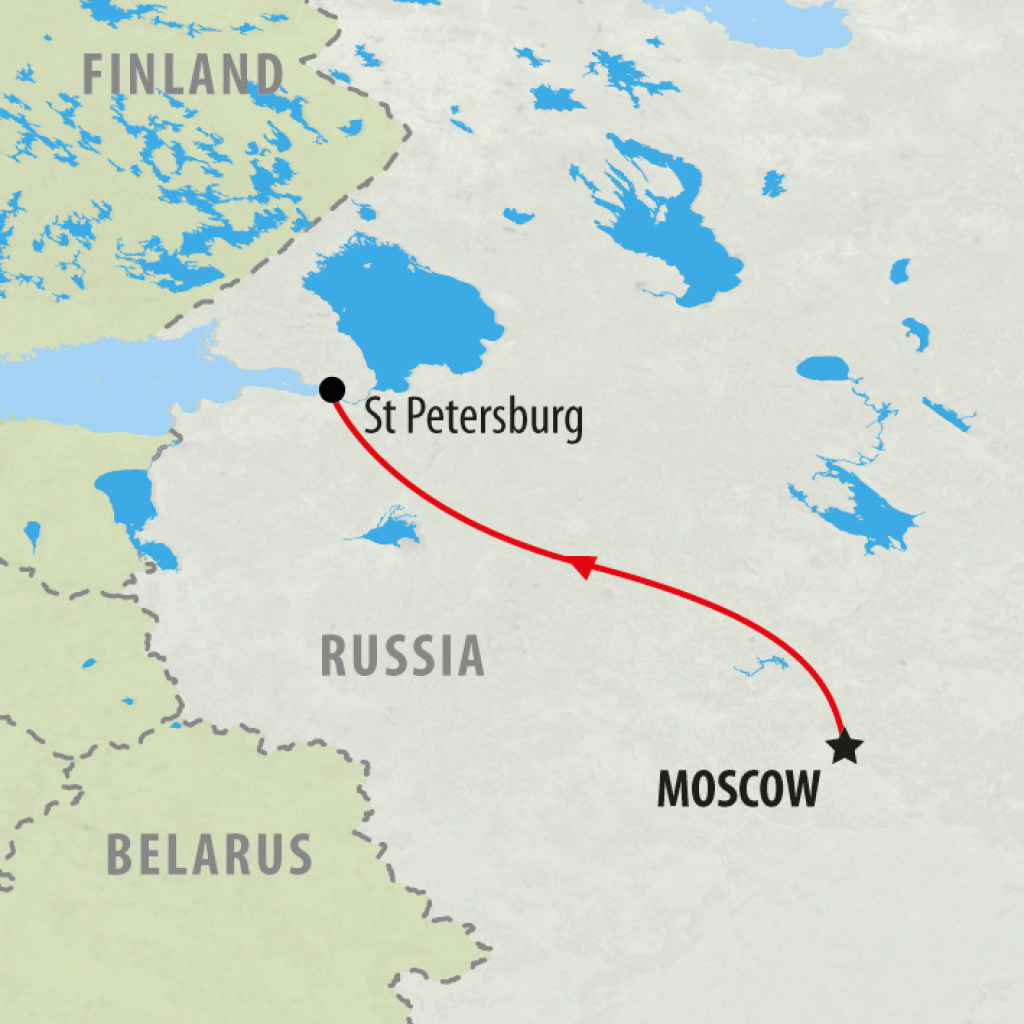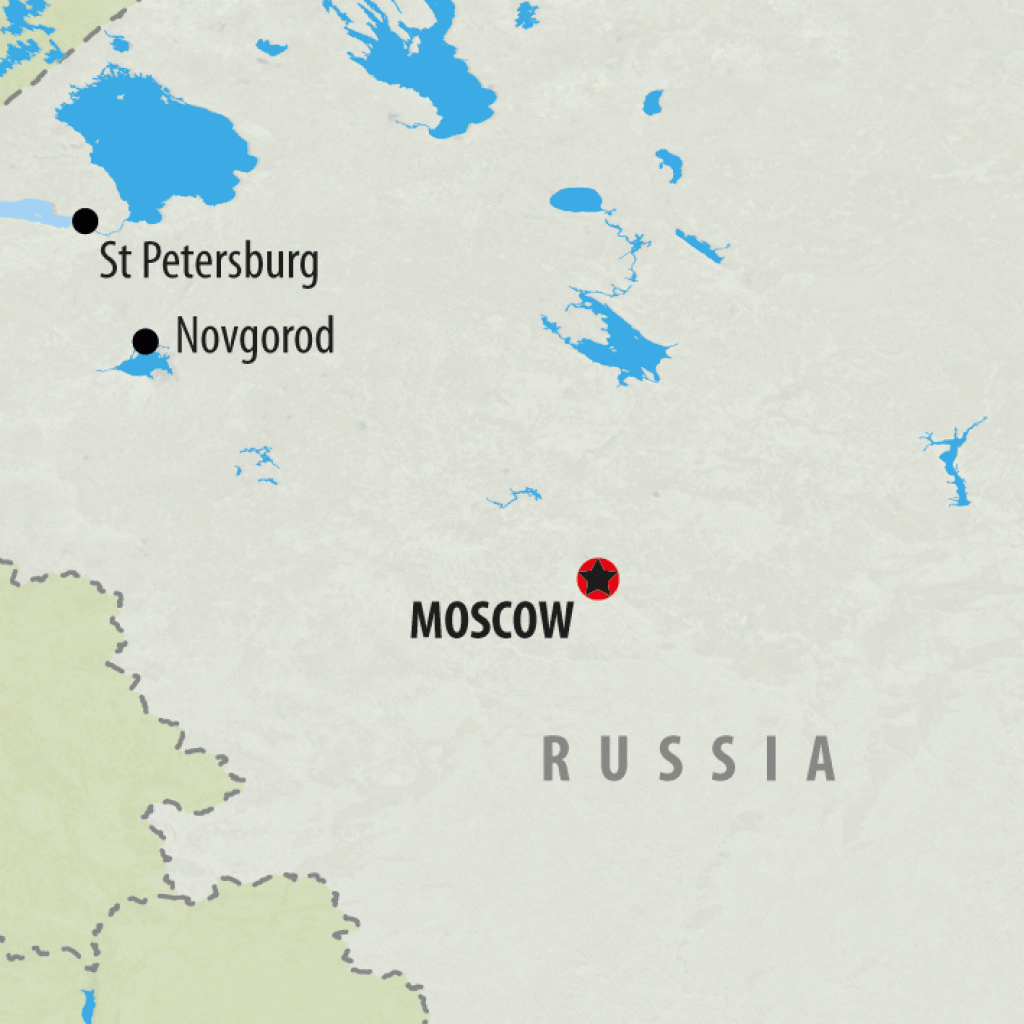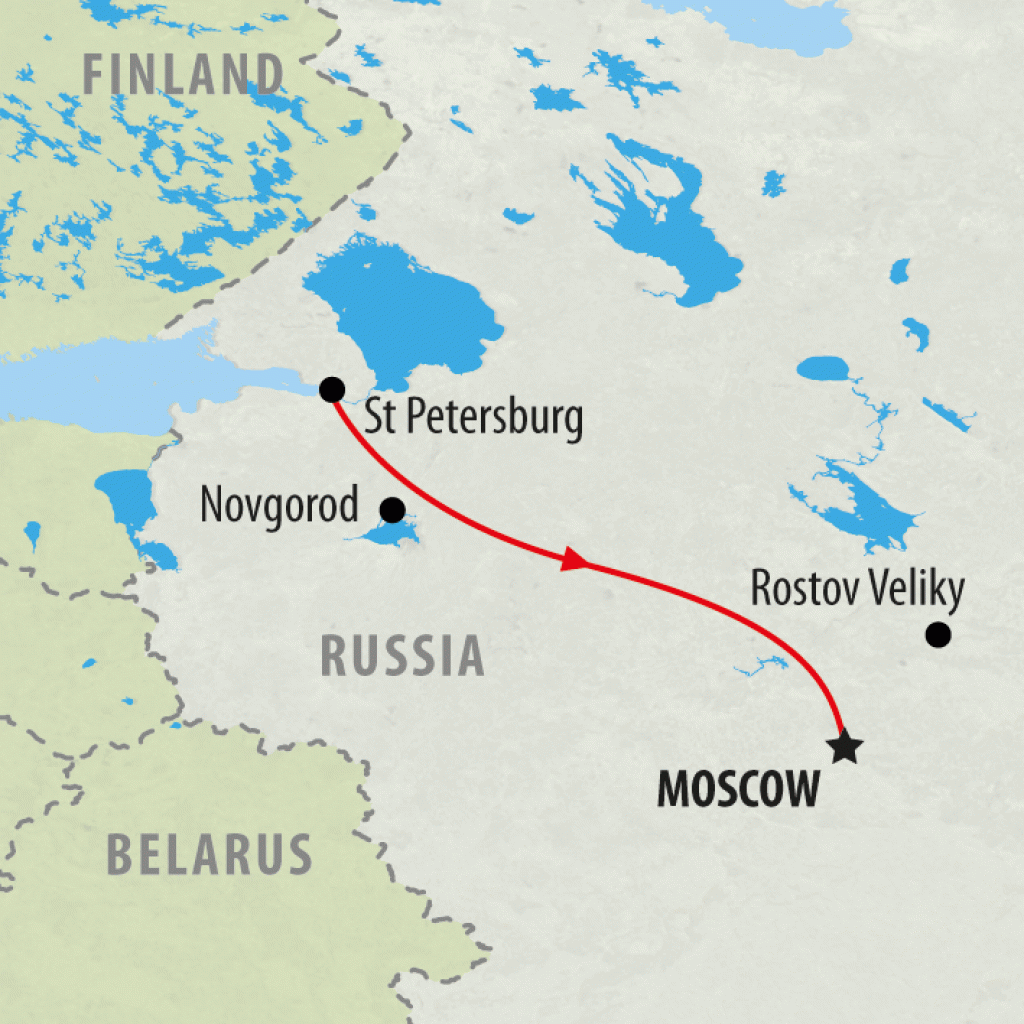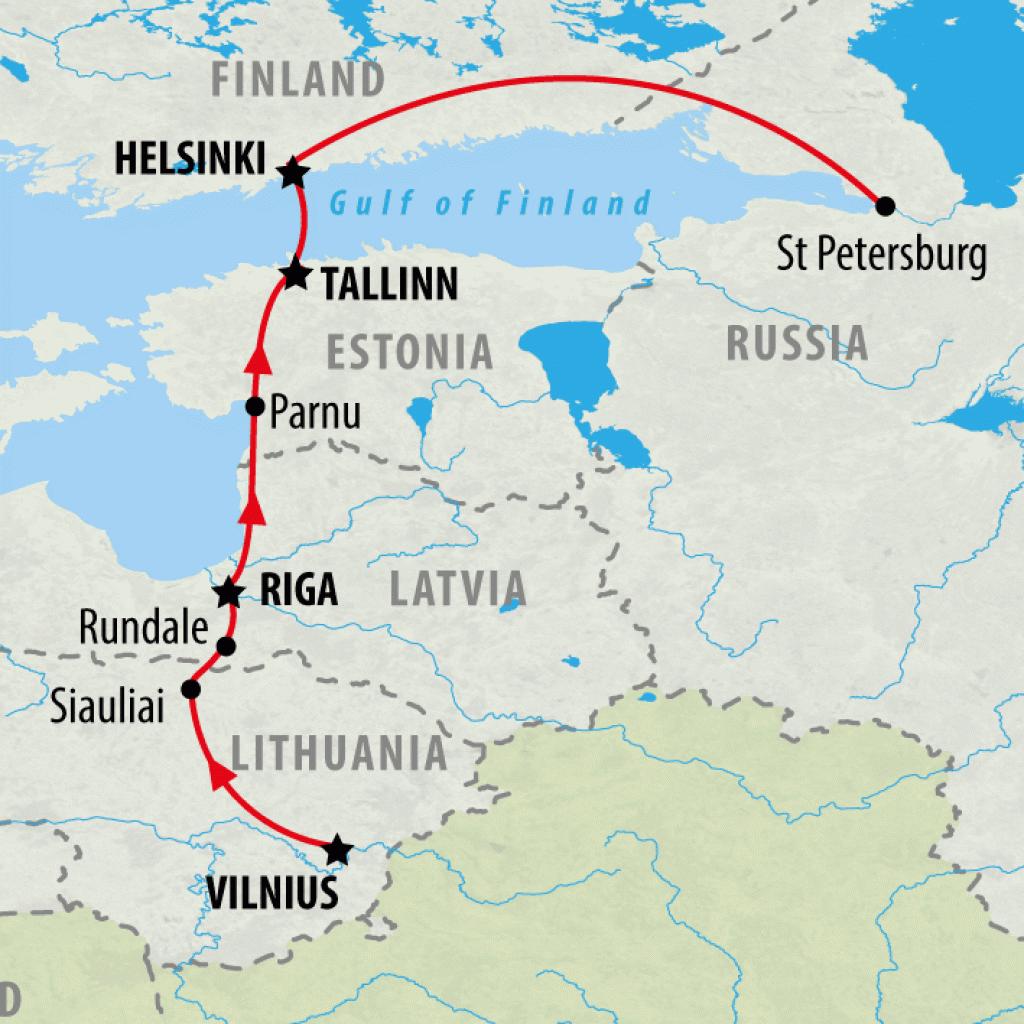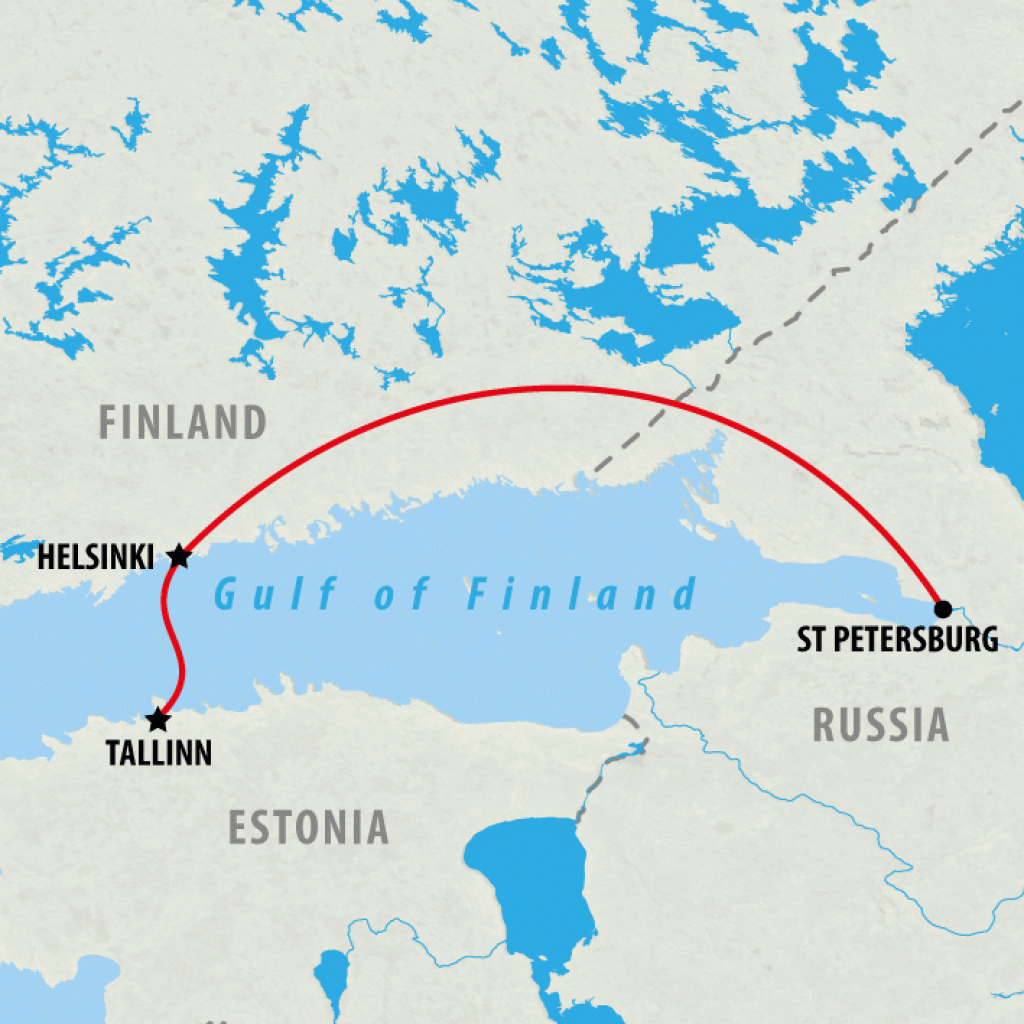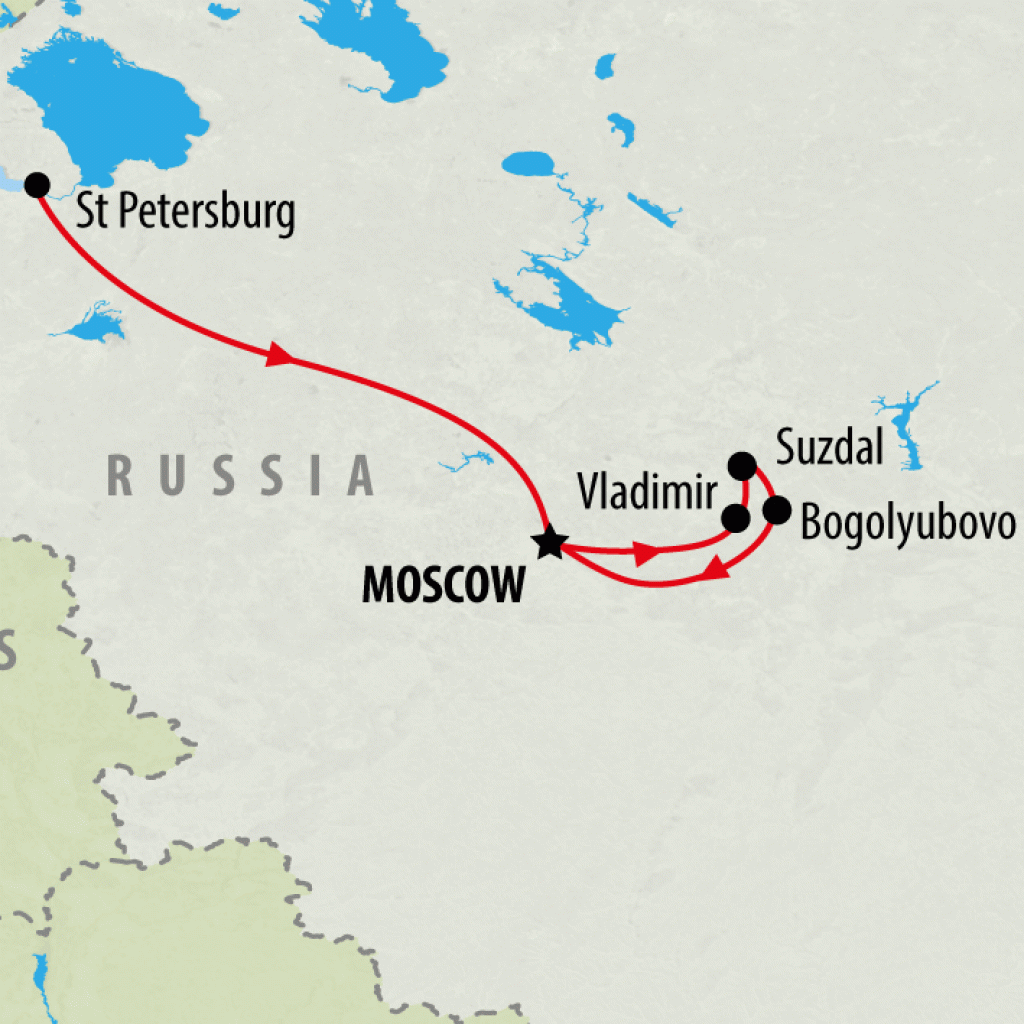What is the Golden Ring?
Northeast of Moscow lie a number of historic cities and rural towns that comprise Russia's Golden Ring, a lost idyll that harks back to the medieval period when the Orthodox Church was crucial to the survival of the Russian state. Practically ignored by the heavy industrialisation of the Soviet Union, the iconic churches and cathedrals of the region have remained untouched over the centuries and are testament to the power and influence of religion in Russia before the rise of Communism.
Surrounded by picturesque hilly countryside, these towns have been likened to open-air museums because of the 12th to 18th century architecture typical of the region; wooden cottages, white-walled kremlins, and onion-domed cathedrals have played host to significant events in Russia's history when fabled tsars and princes ruled over the lands. To visit the Golden Ring is to take a step back in time and discover the Russia of old while enjoying the peace and beauty of rural life.
Best Places to Visit in the Golden Ring
There's no official list of towns and cities that belong to the Golden Ring but general consensus deems there to be seven principal cities with a number more claiming a right to be considered part of the prestigious collection.
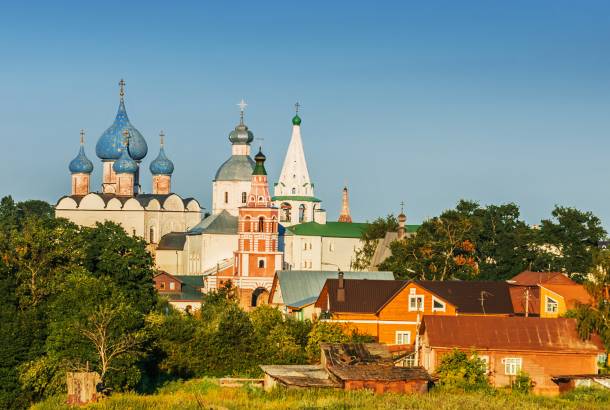
Suzdal
Few places in the Golden Ring have quite as much appeal as the utterly gorgeous town of Suzdal, surrounded by flower-filled meadows and gentle hills and home to a surprising number of churches, cathedrals and monasteries. Seemingly trapped in the 19th century thanks largely to the absence of a railway station, Suzdal retains many traditional buildings and wooden cottages with an unhurried way of life that perfectly suits the surroundings. The Suzdal Kremlin - an attractive white-walled citadel - is older than the city of Moscow and a number of Suzdal's most important religious landmarks date back as early as the 14th century. So crammed with churches and cathedrals is Suzdal that the gleaming domes, shiny cupolas and glistening golden crosses decorate the skyline from every angle.
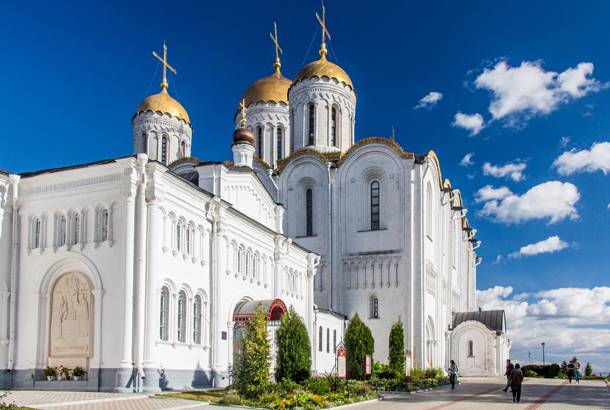
Vladimir
Medieval capital of Russia for close to a century, the city of Vladimir is one of the country's oldest, originally founded in 1108 and prospering under the rule of Prince Andrei Bogolyubksy and his successor until the city was besieged by Tatar-Mongol invasions in 1238. Despite the industrialisation of Soviet times, Vladimir retains a number of stunning churches and cathedrals, many of which stand on a rounded cliff overlooking the Oka Valley and river. Chief among Vladimir's landmarks is the magnificent Assumption Cathedral, an imposing vision of whitewashed stone walls and burnished golden domes that would have once been covered with fine carvings and gilded decorative friezes were it not for a tragic fire in 1185. Close by is the equally impressive Cathedral of St Dmitry, its exterior walls adorned with some of the finest stone carvings to be seen in Russia.
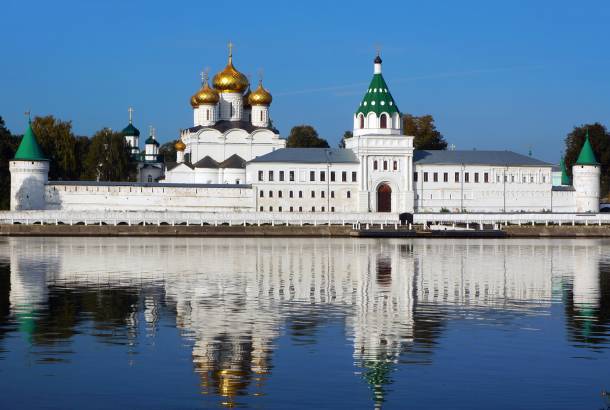
Kostroma
Enjoying a scenic spot at the confluence of the Volga and Kostroma rivers, the modest-sized city of Kostroma once served as the preferred retreat for Moscow-based royalty during times of attack on the city. Prospering in the 16th century as an important market town thanks to the trade connections granted by the port of Arkhangelsk north of the city, Kostroma also enjoyed growth under the early Romanov dynasty. Over the centuries Kostroma has seen its fair share of turbulence, suffering a number of sieges and a devastating fire yet despite this there are plenty of edifices that hark back to the glory days from the sprawling trading arcade to the grand Monastery of St Ipaty enclosed by 16th century walls and home to the fresco-filled Trinity Cathedral.
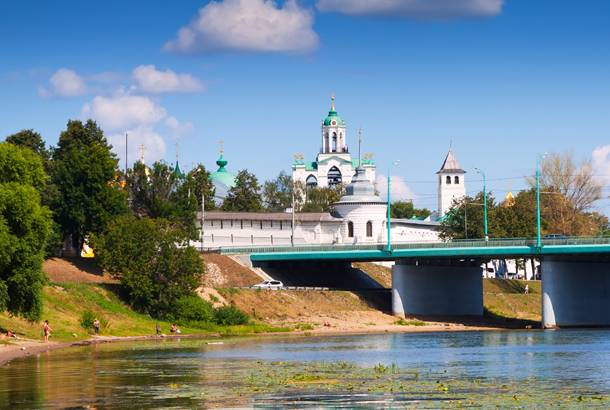
Yaroslavl
Founded in the early 11th century, Yaroslavl is the oldest city on the Volga River and one of its most attractive with an historic centre filled with onion-domed churches and pleasant tree-lined streets leading off from handsome town squares. Listed a UNESCO World Heritage Site in 2005, Yaroslavl proudly displays its past as an important commercial centre with 17th century merchant houses, churches, and large neoclassical buildings lining the masterfully designed streets. The majority of Yaroslavl's key sights are located close to the pleasant riverside promenade, including the fortified Monastery of the Transfiguration of the Saviour, one of the city's oldest structures with buildings dating back to the 16th century though the monastery was originally founded four centuries prior.
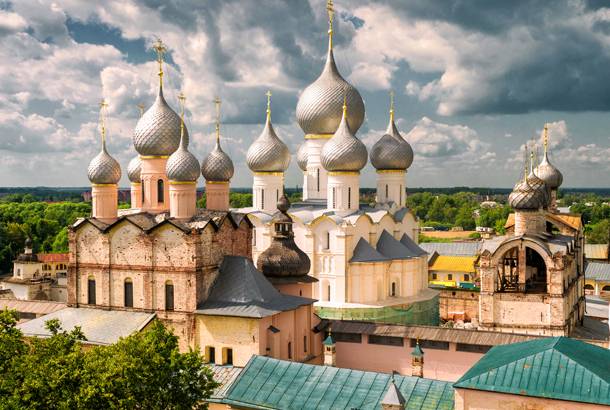
Rostov-Veliky
Situated on the shores of Lake Nero, Rostov-Veliky is one of the grandfathers of the Golden Ring, first chronicled in 862 and a good few centuries older than many other towns in the region. During its long history it has served as a local capital and an important centre for the clergy until Rostov-Veliky's decline in the 17th century. A sleepy village-like atmosphere clings to the town today with a quiet stillness that descends with the waning light, only to be broken come morning with the crowing of the local cockerels. This only adds to the appeal with the charming historical centre home to the supremely photogenic Rostov Kremlin, its solid walls coloured a delicate shade of pink and enclosing a number of 17th century buildings including the magnificent domed Assumption Cathedral and the richly decorated St John the Divine Gateway Church.
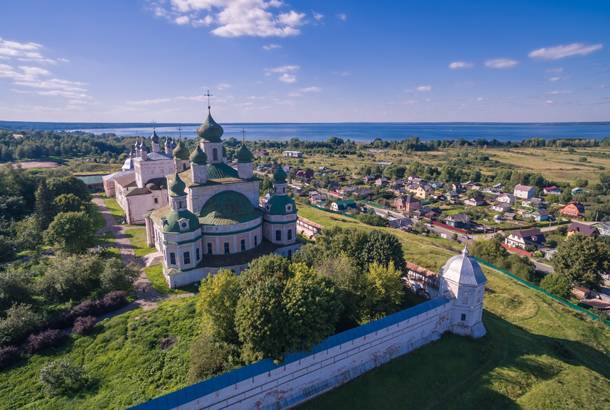
Pereslavl-Zalessky
Lying on the southeastern shore of Lake Pleshcheyevo, the ancient town of Pereslavl-Zalessky was founded in 1152 and during the course of history has given rise to medieval Russia's famous prince and commander, Alexander Nevsky, as well as the early beginnings of the Russian Fleet thanks a young Peter the Great who built a toy flotilla while on holiday here. Like many towns in the region, Pereslavl-Zalessky experienced devastating raids and damage though thankfully a number of monuments have remained preserved including the Kremlin, the heart of the original settlement and home to the 12th century Cathedral of the Transfiguration of the Saviour and the tent-roofed Church of Peter the Metropolitan. Further afield stands the large Goritsky Monastery where Ivan the Terrible had planned to retire.
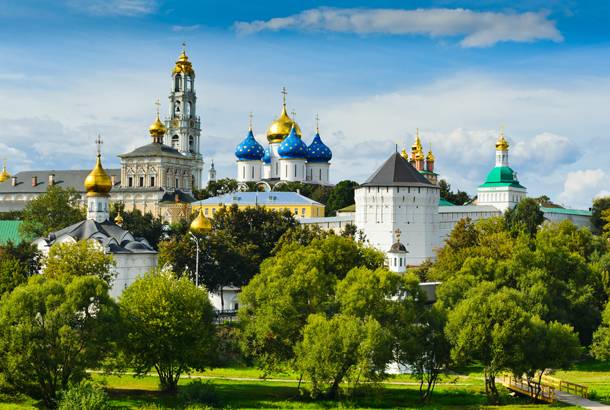
Sergiev Posad
Just 75km northeast of Moscow is the important pilgrimage town of Sergiev Posad, which grew around one of the country's greatest monasteries: the Trinity Monastery of St Sergius, also known as the Trinity Lavra. Founded in the 14th century by the pious monk and spiritual leader Sergius of Radonezh, the monastery served as the spiritual centre of the Russian Orthodox Church and is today an active place of worship, attracting pilgrims ever since it first opened its doors. Named Russia's patron saint, Sergius' tomb lies in the Trinity Cathedral within the monastery and he is honoured with a daily memorial service. On the grounds of the monastery also stands the star-spangled Cathedral of the Assumption and the unusually painted Refectory Church of St Sergei.
More Towns in the Golden Ring
For those looking to explore the Golden Ring in more depth there are a handful of other towns worth visiting, chief among them the serene Plyos where 19th century provincial Russian architecture is wonderfully preserved and set against a fine backdrop of forested hills. The old town centre is home to the remains of the 15th century fort and the understated Assumption Cathedral. Further off the popular route is the busy city of Rybinsk, situated on the Volga River with a well-preserved historic centre. South of here is Myshkin characterised by wooden cottages and a notable infatuation with the humble mouse, and further south is Uglich, home to the colourful and star-spangled Church of St Demetrius on Spilled Blood - which marks the spot where the murdered body of 10-year-old Dmitry Ivanovich (son of Ivan the Terrible) was found.
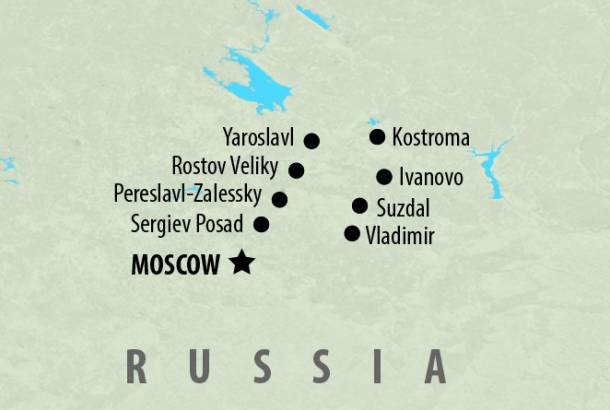
Getting Around Russia's Golden Ring
It's called the Golden Ring for a reason with the principal towns and cities forming a circular route from Moscow that can easily be undertaken by car. The distance between each point of interest is minimal with the average road journey taking around an hour, assuming you're following the popular route of Vladimir -(1hr)- Suzdal -(4hrs)- Kostroma -(2hrs)- Yaroslavl -(1.5hr)- Rostov-Veliky -(1hr)- Pereslavl-Zalessky -(1hr)- Sergiev Posad. If starting from Moscow it's advisable to take the train to Vladimir to avoid the horrendous city traffic slowing down your journey. The main towns and cities listed here can be comfortably covered in an 8-10 day itinerary from Moscow.
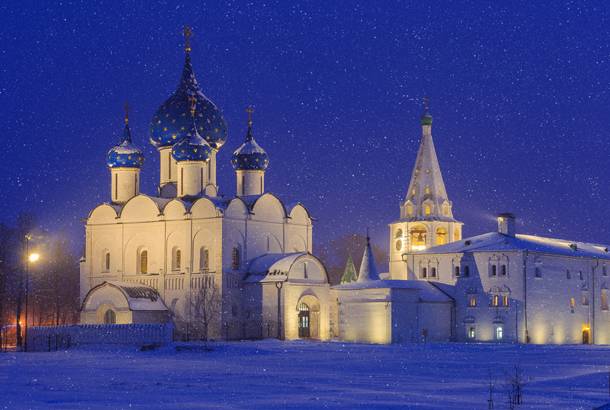
Best Time to Visit the Golden Ring
The Golden Ring is truly a year-round destination with each season bringing a new and beautiful palette of colour to the rural countryside. Visitor numbers peak with the warm summer months (June - August) when the skies are a vivid blue, making for a particularly great backdrop against the domes and cupolas of the region's many churches and cathedrals. In spring (April - May) the meadows come alive with flowers while in the short autumn months (September - October) the scenery takes on the rich hues of red, orange and yellow. The freezing temperatures of the winter months (November - March) often bring a thick blanket of snow that creates a dreamy wonderland with lakes and rivers frozen over, perfect for ice skating.
Recommended Golden Ring Tours
Here's a selection of our Russia tours that include some of the historic towns of the Golden Ring. If you have a particular itinerary in mind, contact our tailor-made team who would be happy to put together your dream holiday to Russia and the Golden Ring.
Further Information
For more handy information on travelling to Russia, check out our useful Travel Guide resources:
Best Places to Visit - where else to go in Russia from Moscow to Yekaterinburg
Top Travel Tips - our guide to money, health, shopping and much more in Russia
Best Time to Visit - when to go and what to expect with each season
Tourist Visas - latest guidelines on visa procurement for Russia
See Also
For more useful information when planning your trip to Russia, have a look through our handy Travel Guide resources:
Best Time to Visit - climate and seasons in RussiaBest Places to Visit - where to go and what to see in Russia
Tourist Visas - you won't get in without one!
Top Travel Tips - what to expect of Russian trains, food and shopping
Traveller Reviews - hear why our passengers enjoy our Russia tours
Russia Video Lounge - see Russia revealed in these video picks
White Nights Festival - find out about this popular event in St Petersburg
